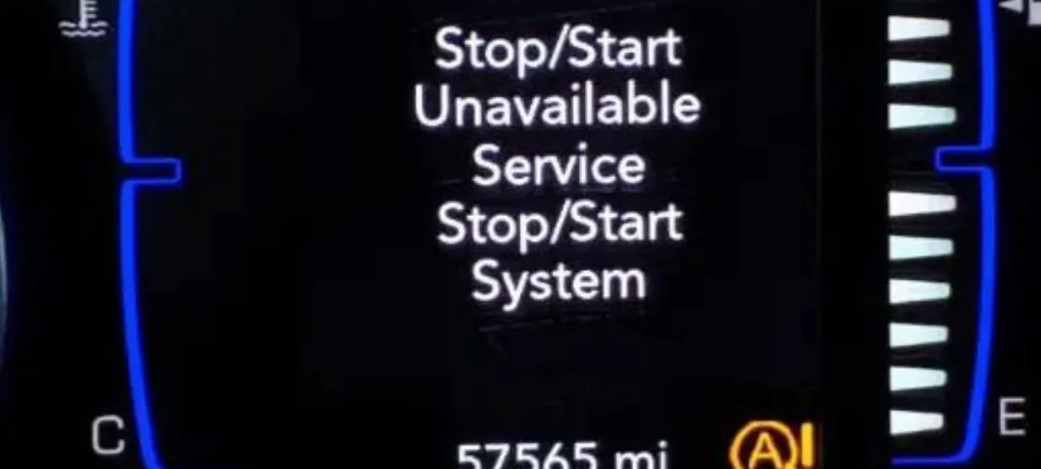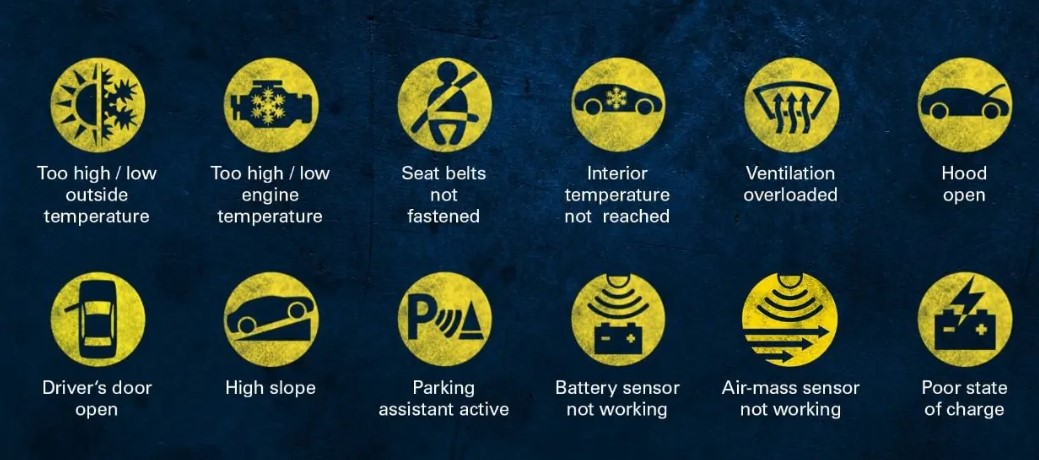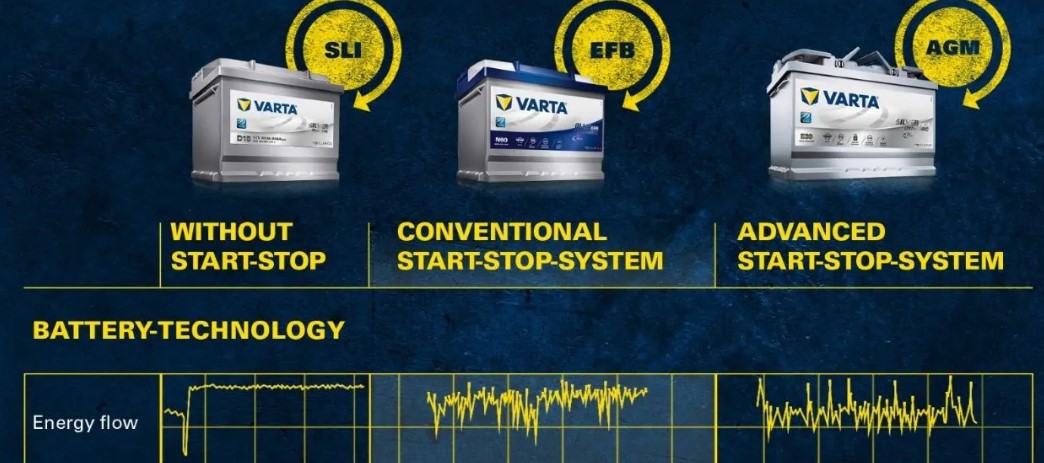Fuel efficiency and emission reduction in the automotive sector find their solution in auto start-stop technology, a notable advancement in car engineering that has garnered diverse reactions from drivers. Those who grasp its functionality and heed its warning signals can harness its advantages while ensuring safety on the road.
Chrysler Auto Start Stop Warning Light Causes and Solutions

Encountering the auto stop/start system warning light in Chrysler vehicles necessitates understanding potential causes and how to remedy them. Key factors identified through our research include:
- Battery approaching the end of its lifespan.
- Corrosion affecting battery terminals.
- Occasional electrical issues.
- Malfunctions in sensors or the system itself.
- Software-related challenges.
- A malfunctioning Intelligent Battery Sensor (IBS).
- Immediate action is crucial upon spotting this warning light. A comprehensive overview awaits, providing insights into the auto stop/start system warning light and its implications.
Decoding the 2017 Chrysler Auto Start Stop Warning Light
- Green Light for Go: A solid green light indicates the operational status of the start-stop system, ready for use.
- Activation Signal: While the vehicle halts, such as at a traffic signal, the active system is denoted by a continuously lit light.
- Amber Alert: A steady amber light signals a system issue requiring attention, posing no immediate danger.
- Flashing Warning: A flashing light, irrespective of color, signals a potential malfunction in the system.
- Vehicle Communication: Your vehicle communicates the health of its start-stop system through this light, aiding in system efficiency maintenance.
The Mechanics of Automatic Start-Stop

The system uses advanced sensors and algorithms to observe the vehicle's status and driver's actions. For instance, when the car decelerates and halts at a red light or in heavy traffic, it identifies this idle state. It then shuts off the engine to conserve fuel that would otherwise be wasted.
The brilliance of the system lies in its swift response. Upon releasing the brake or pressing the clutch (in manual cars), the engine restarts promptly, ensuring a seamless driving experience with minimal delay.
Factors Affecting the Automatic Start-Stop System

- Integrated Operation: The auto start-stop system collaborates with other car systems to determine optimal activation times.
- Battery Level: The system's activation depends on battery charge; if low, the system may not engage, as restarting the engine requires a certain energy threshold.
- Engine Temperature: Ensuring the engine is at an ideal temperature, the system remains inactive if too cold or overheated to safeguard the engine.
- Interior Comfort: Considering the cabin's temperature, the system may refrain from activating on chilly days with the heater running to maintain interior warmth.
- Efficiency and Comfort Balance: Striking a balance between vehicle performance, passenger comfort, and fuel efficiency remains a priority for the system.
Battery Requirements for Auto Start-Stop Systems

- Tailored Design: Start-stop system batteries are purpose-built to withstand frequent starting and stopping, distinguishing them from conventional batteries.
- Enhanced Durability: Designed for longevity, these batteries endure numerous charge and discharge cycles without rapid wear.
- Specific Energy Delivery: Providing quick energy bursts for engine restarts, unlike traditional batteries, offering a steady power flow for initial start-up and electronics.
- Extended Life Cycle: Engineered for an extended on-off cycle lifespan compared to regular batteries.
- Identifiable Features: Although visually similar, start-stop batteries typically have distinctive labels or markings for easy identification during purchase or replacement.
- Specialized Maintenance: Unique maintenance practices are necessary, as standard chargers may not suit these batteries, underscoring their specific care requirements.
- Cost Consideration: Despite a higher initial cost, the long lifespan and fuel-saving benefits often outweigh the expense.
Impact of Automatic Start-Stop on Fuel Efficiency

Escalating fuel costs and environmental concerns are making drivers prioritize fuel efficiency. The auto start-stop system halts the engine during brief stops and restarts swiftly, aiming to curtail fuel consumption and emissions.
Real-world data indicates a 5-7% boost in fuel efficiency in stop-and-go traffic. While modest, these savings accumulate over time, particularly for regular city drivers or commuters. Additionally, reduced fuel consumption translates to lower carbon emissions, benefiting both the driver and the environment.
Addressing Auto Start-Stop System Malfunctions

As with any advanced vehicle technology, the auto start-stop system may encounter issues. Identifying these problems is crucial to preempt larger concerns.
An apparent malfunction manifests when the system fails to activate during typical scenarios, such as at a traffic light. A continuous amber warning light on the dashboard signals a problem. At the same time, a blinking engine start-stop button signifies a more urgent system issue. Regular vehicle checks and a trustworthy mechanic are essential for a smooth, secure driving experience.
Maintenance Costs for Start-Stop Systems
Maintaining the start-stop feature encompasses anything from basic software updates to intricate battery replacements. Early detection of issues translates to significant cost savings over time.
- Software Refinements: A straightforward software update occasionally suffices, typically costing between $50 and $100.
- Sensor Replacement Costs: The system relies on multiple sensors, and replacing one may range from $100 to $200.
- Battery Exchange Expenses: Due to their specialized nature, start-stop batteries cost between $200 to $500 for replacement.
- Diagnostic Assessments: In cases where the problem isn't immediately evident, diagnostic tests may be necessary, usually costing about $50 to $100.
- The Value of Proactivity: Addressing minor issues promptly can circumvent more expensive repairs later. Generally, maintenance proves more economical than repair.
Closing Remarks
The auto start-stop system epitomizes the automotive industry's commitment to innovation and environmental conscientiousness. Grasping its intricacies is pivotal for seamless operation, empowering drivers to address minor issues effectively. For significant concerns, entrusting professionals is prudent. Always remember that informed and secure driving is paramount!

